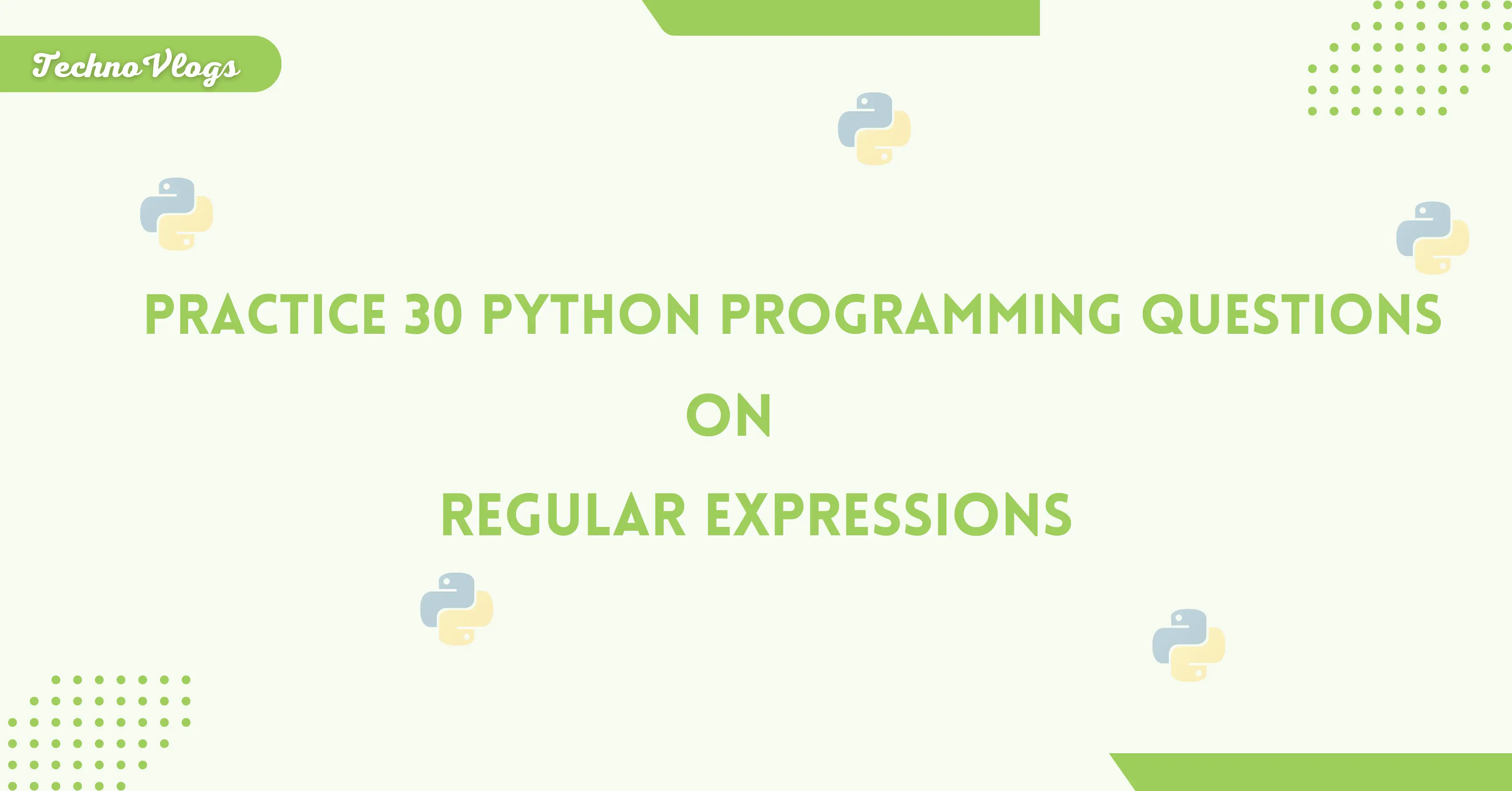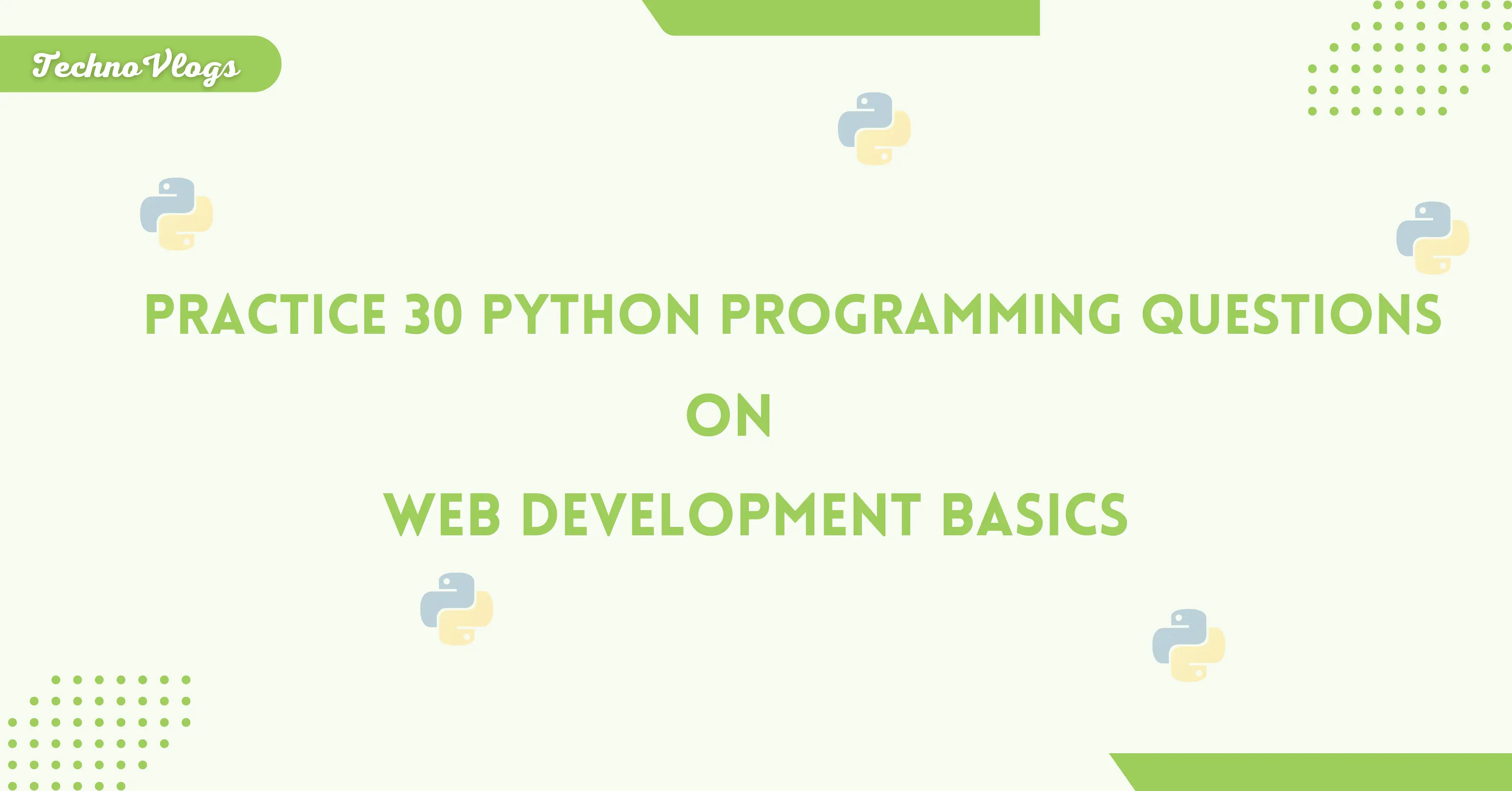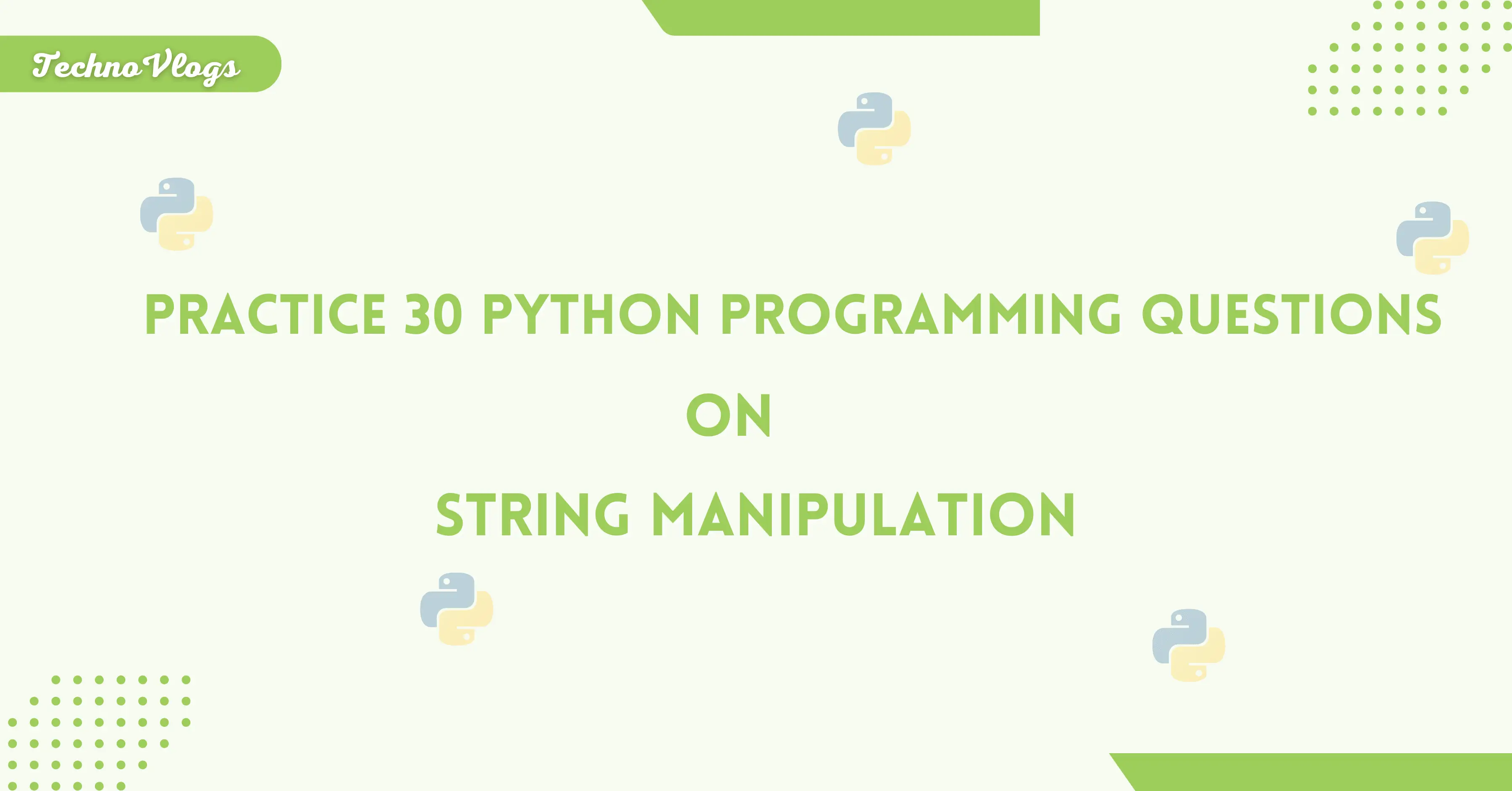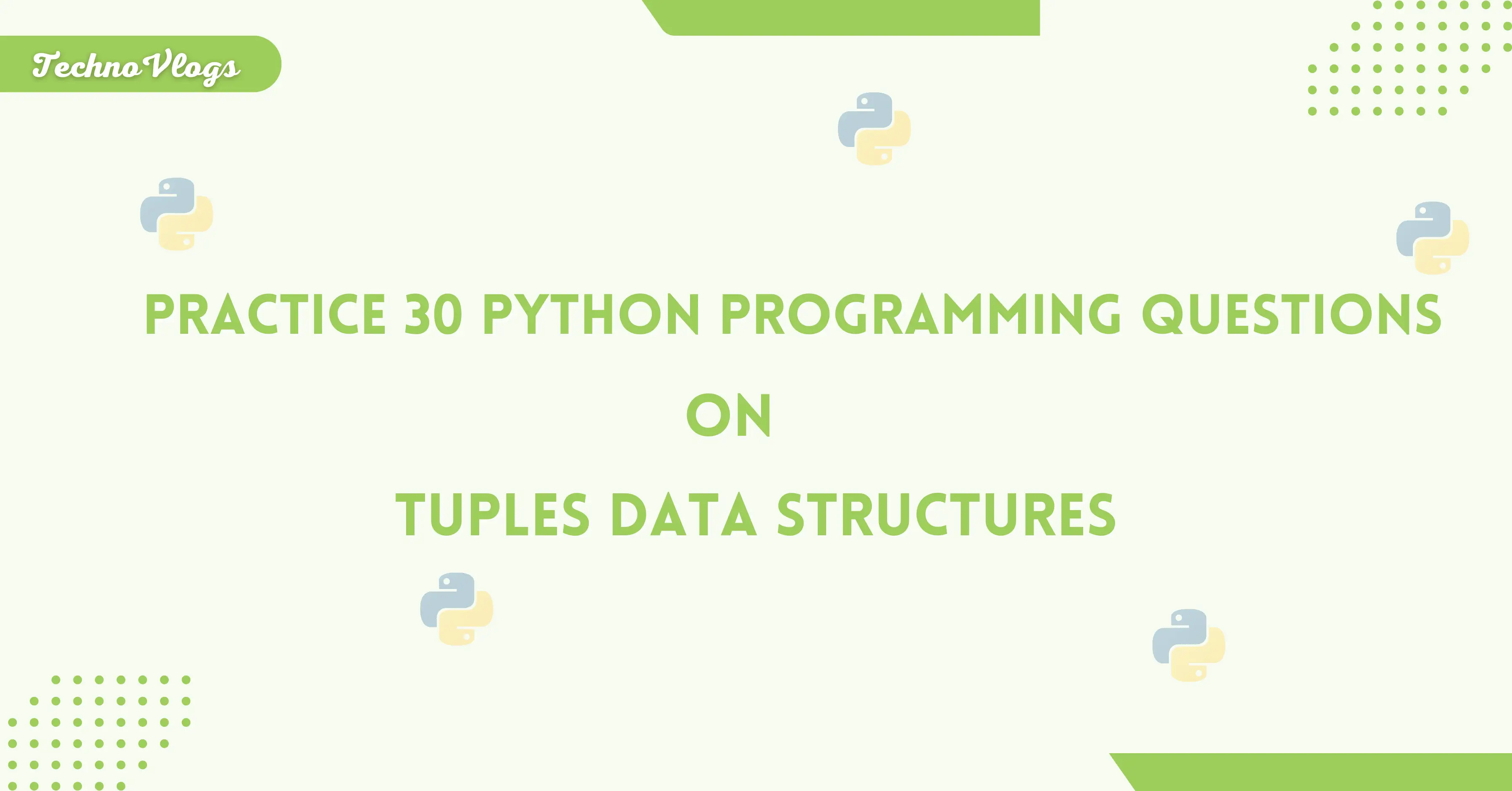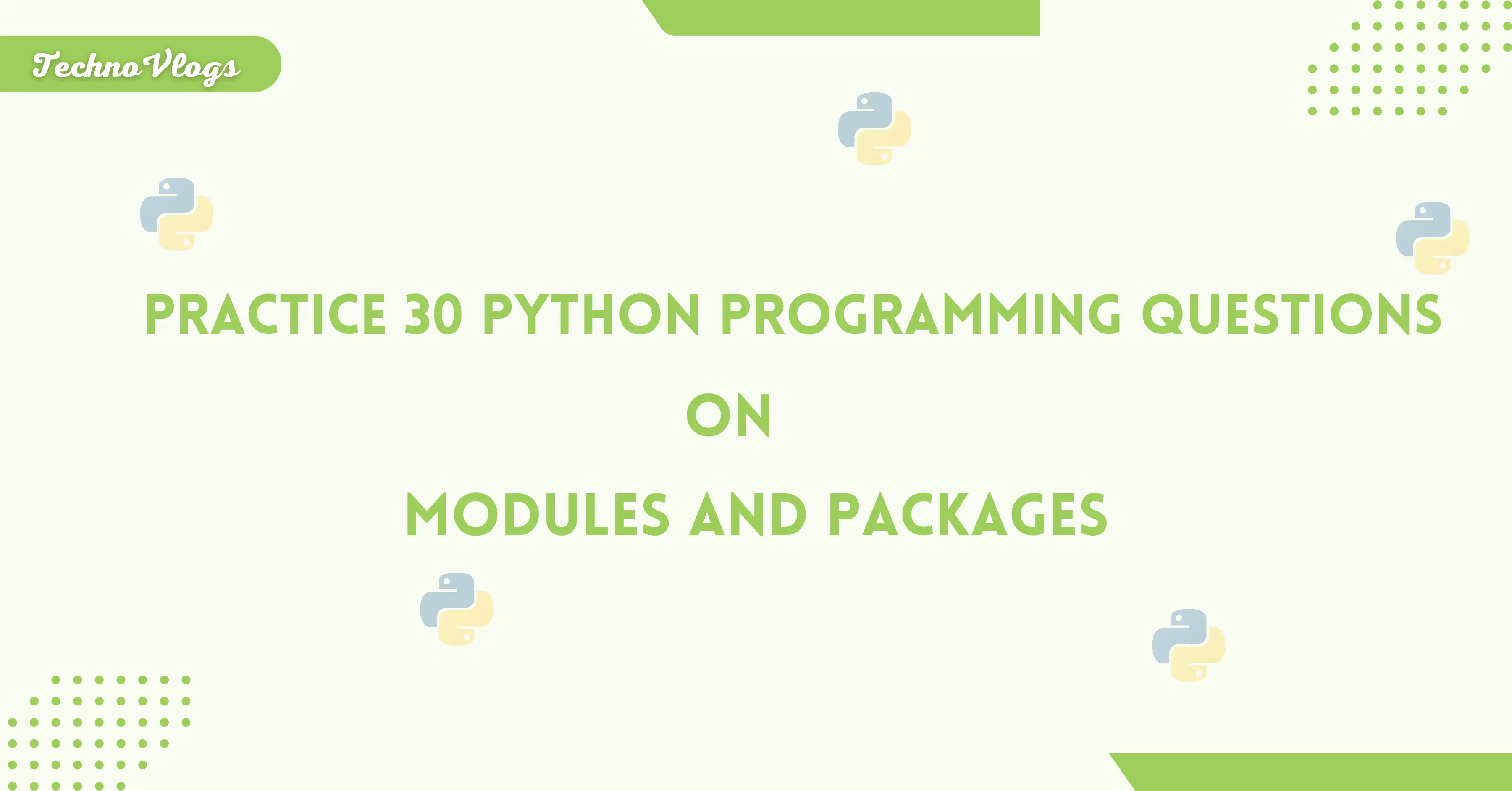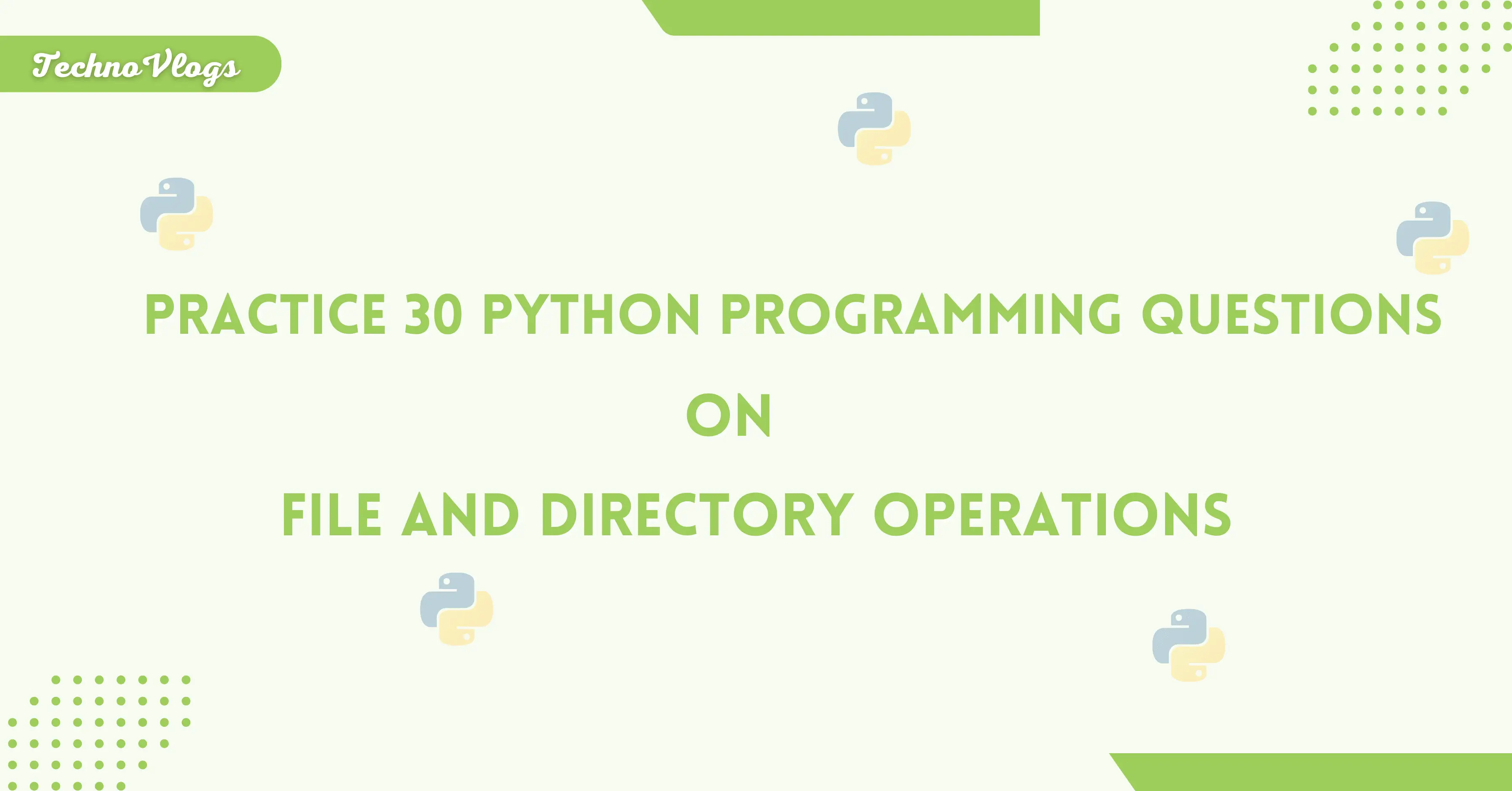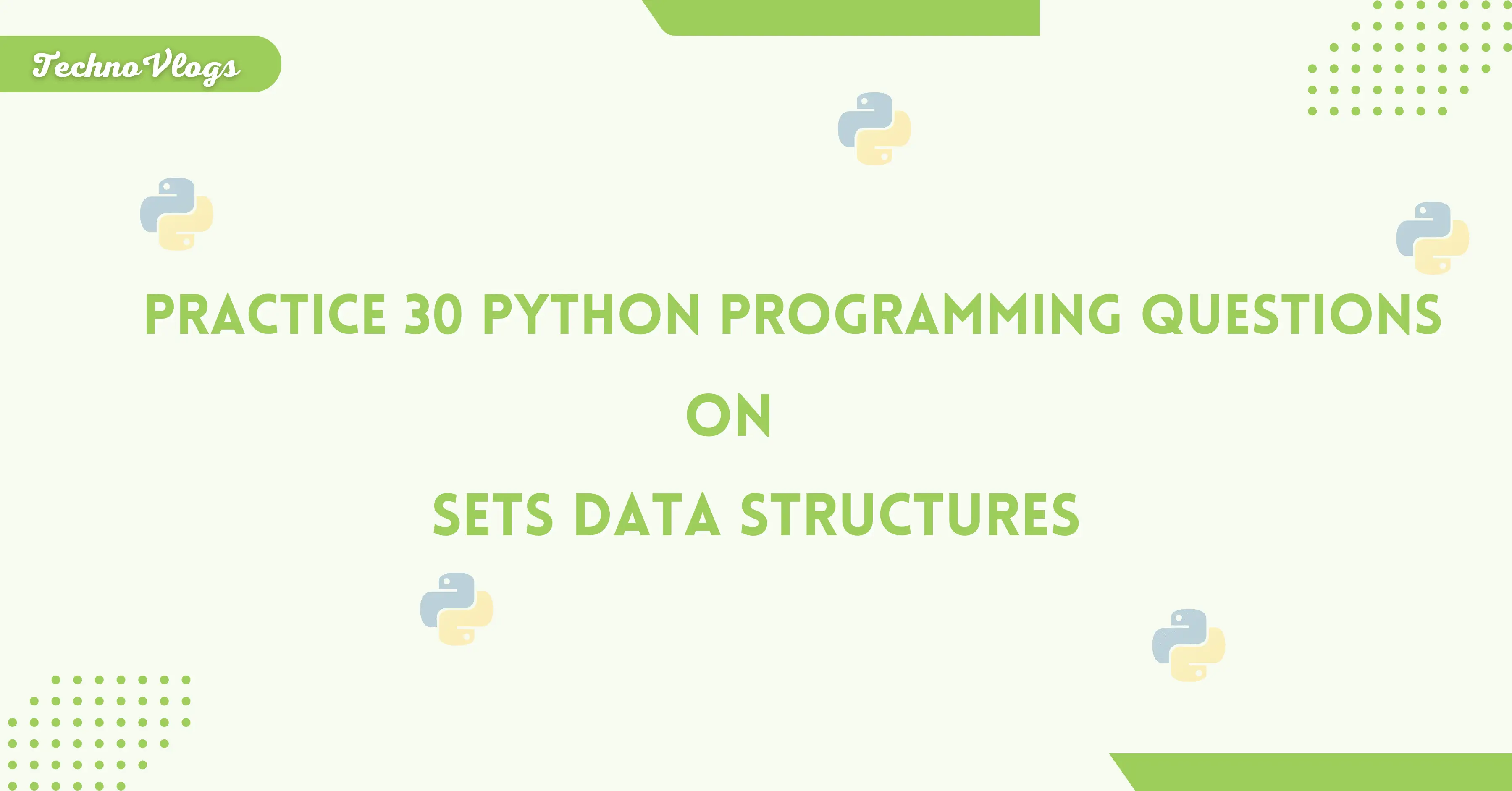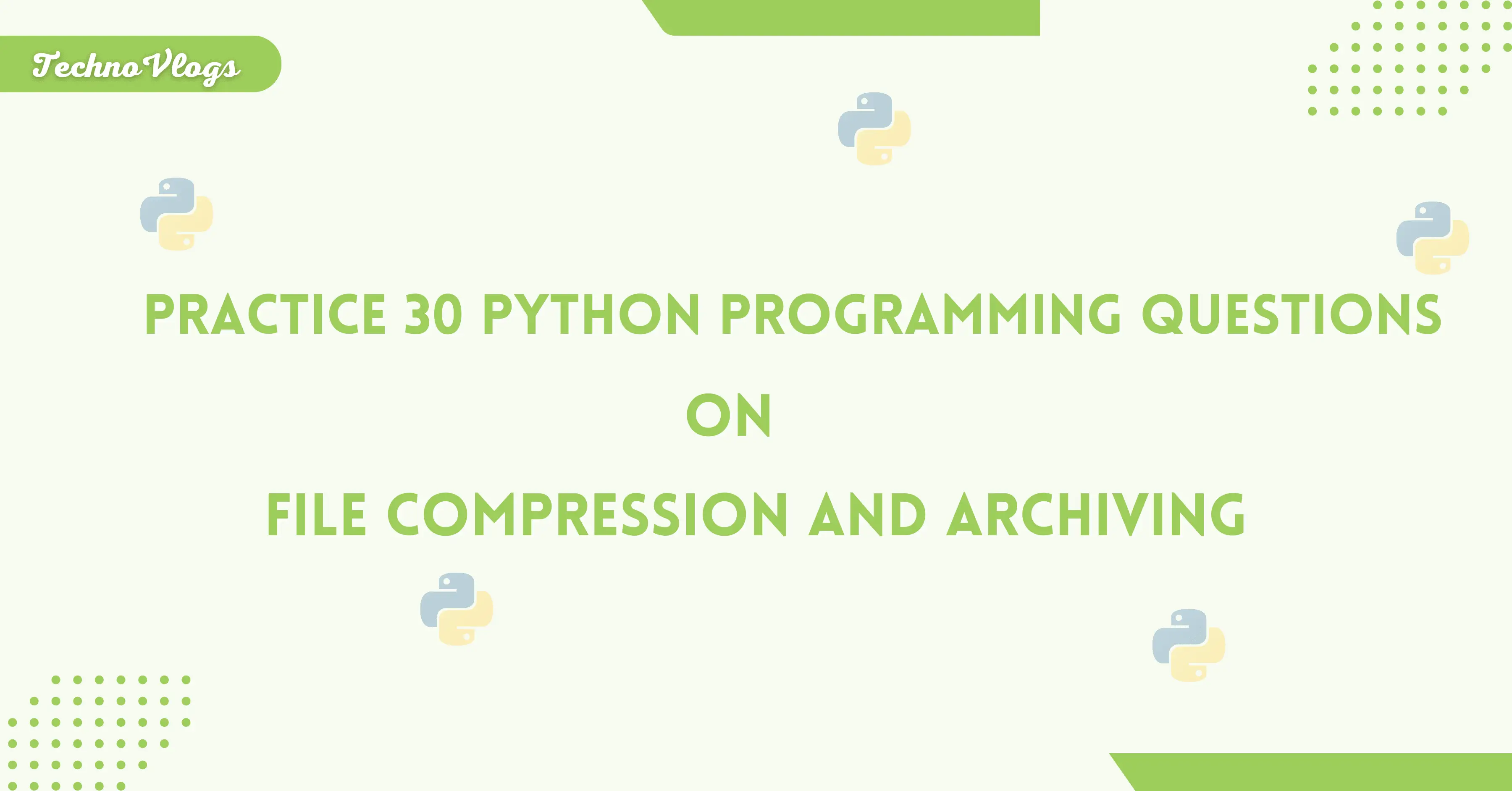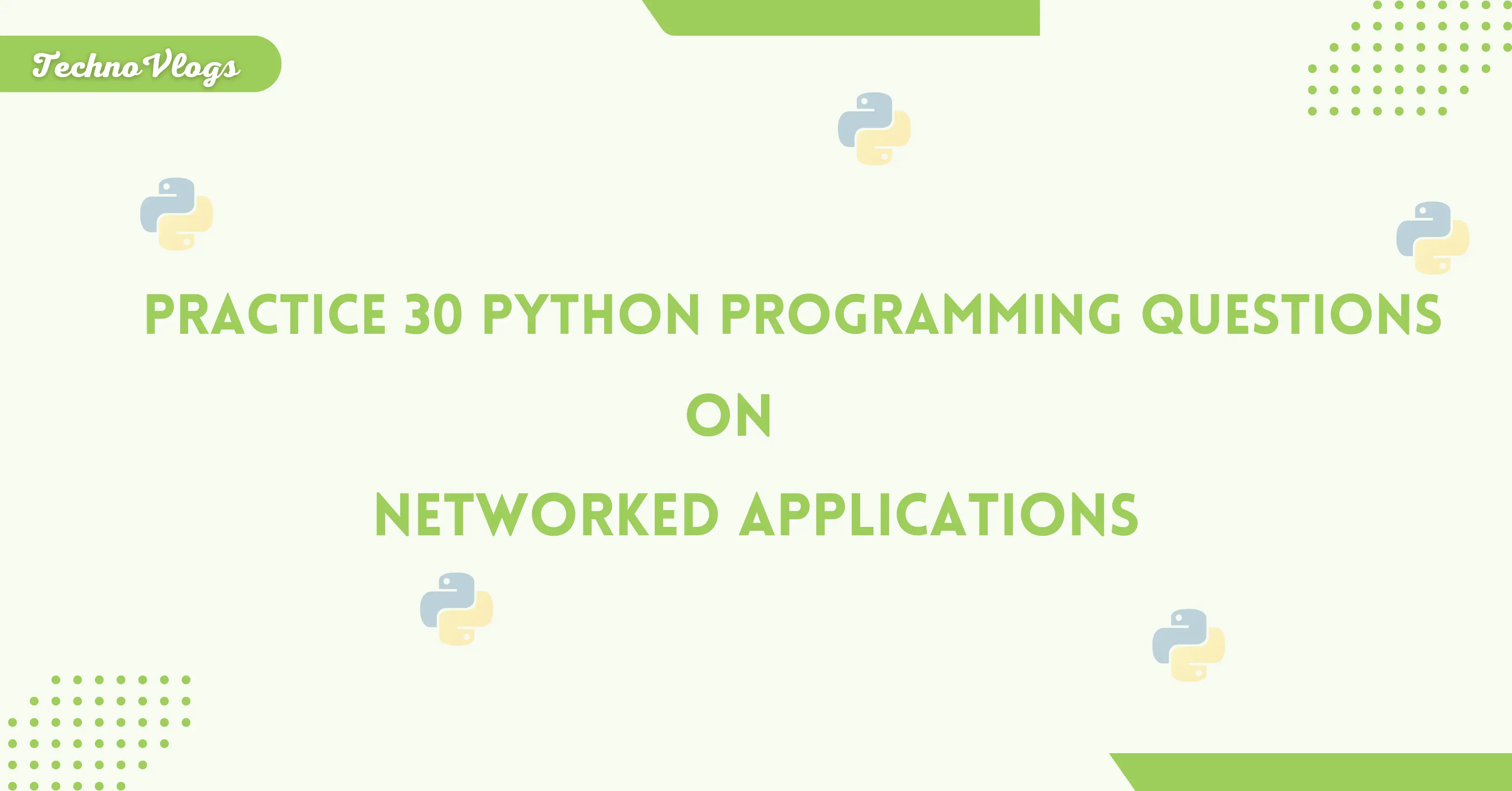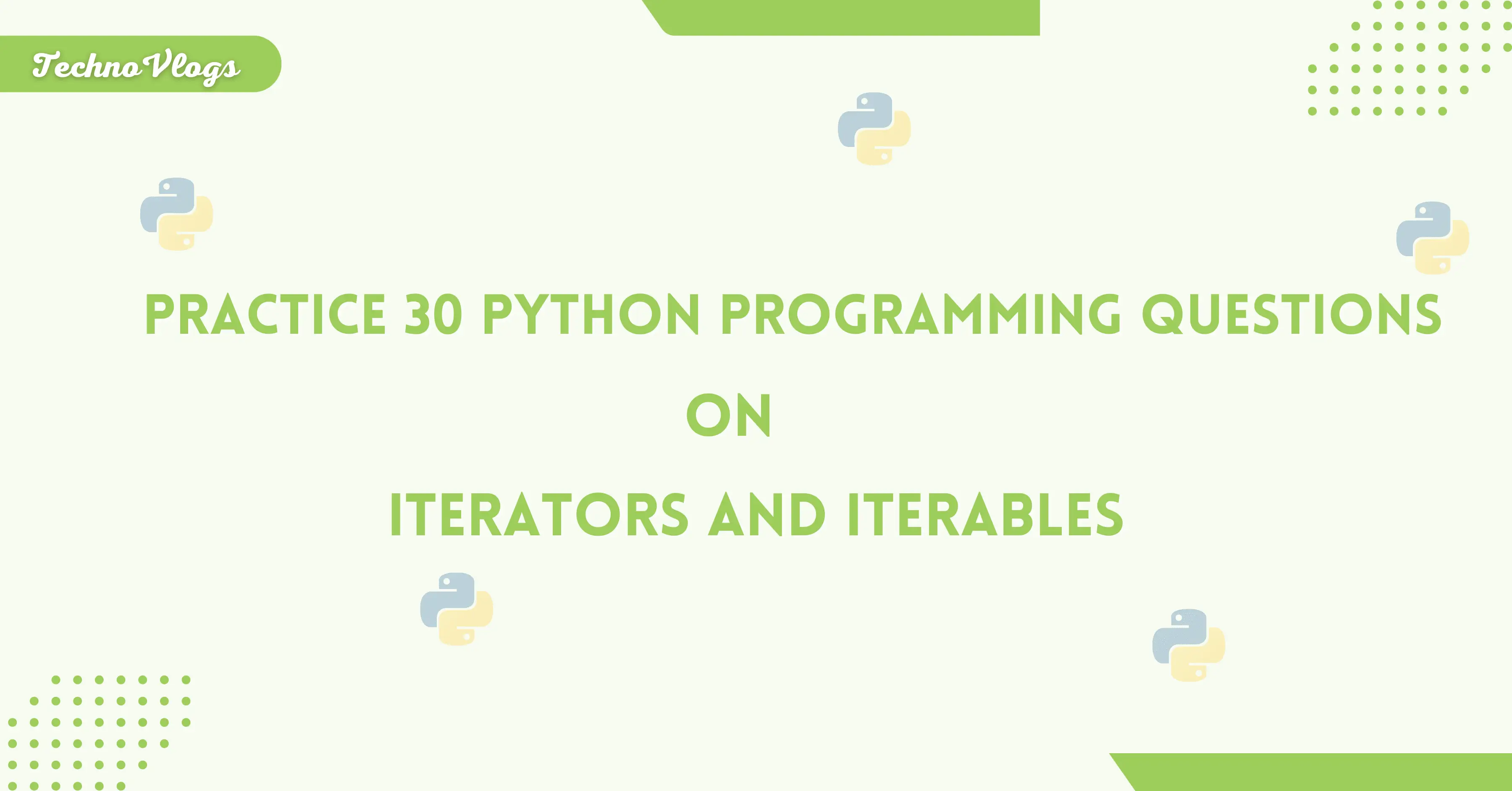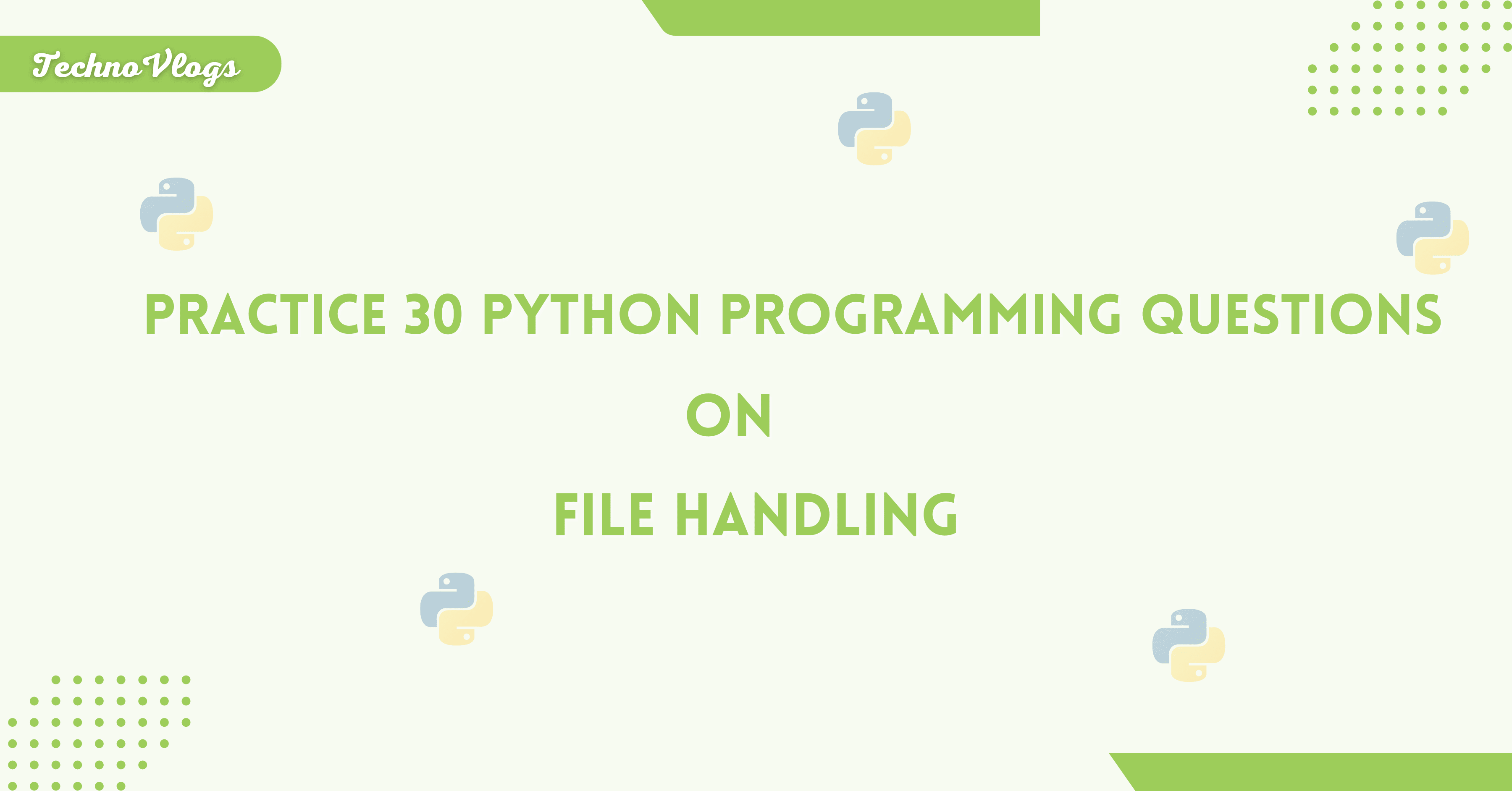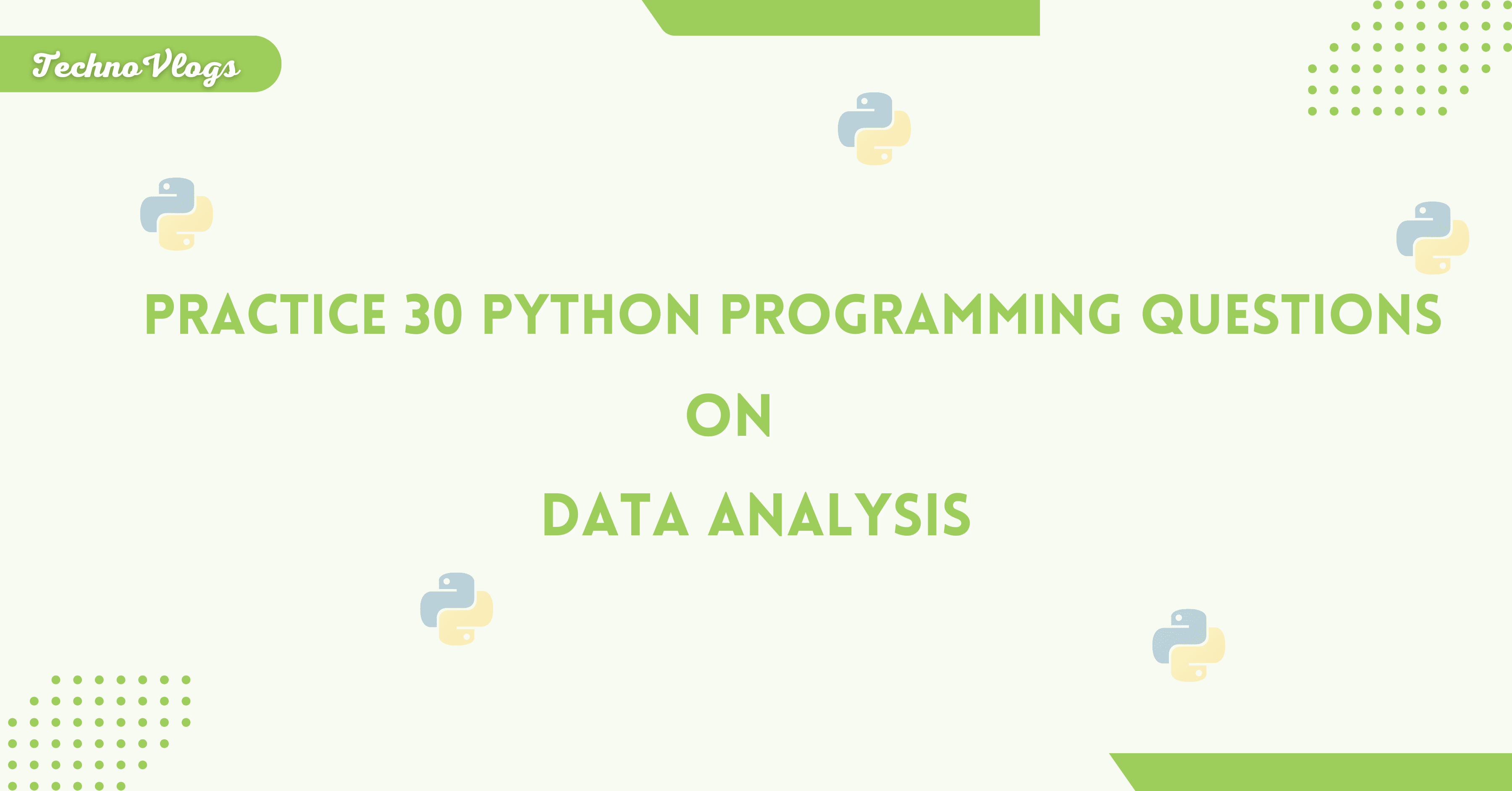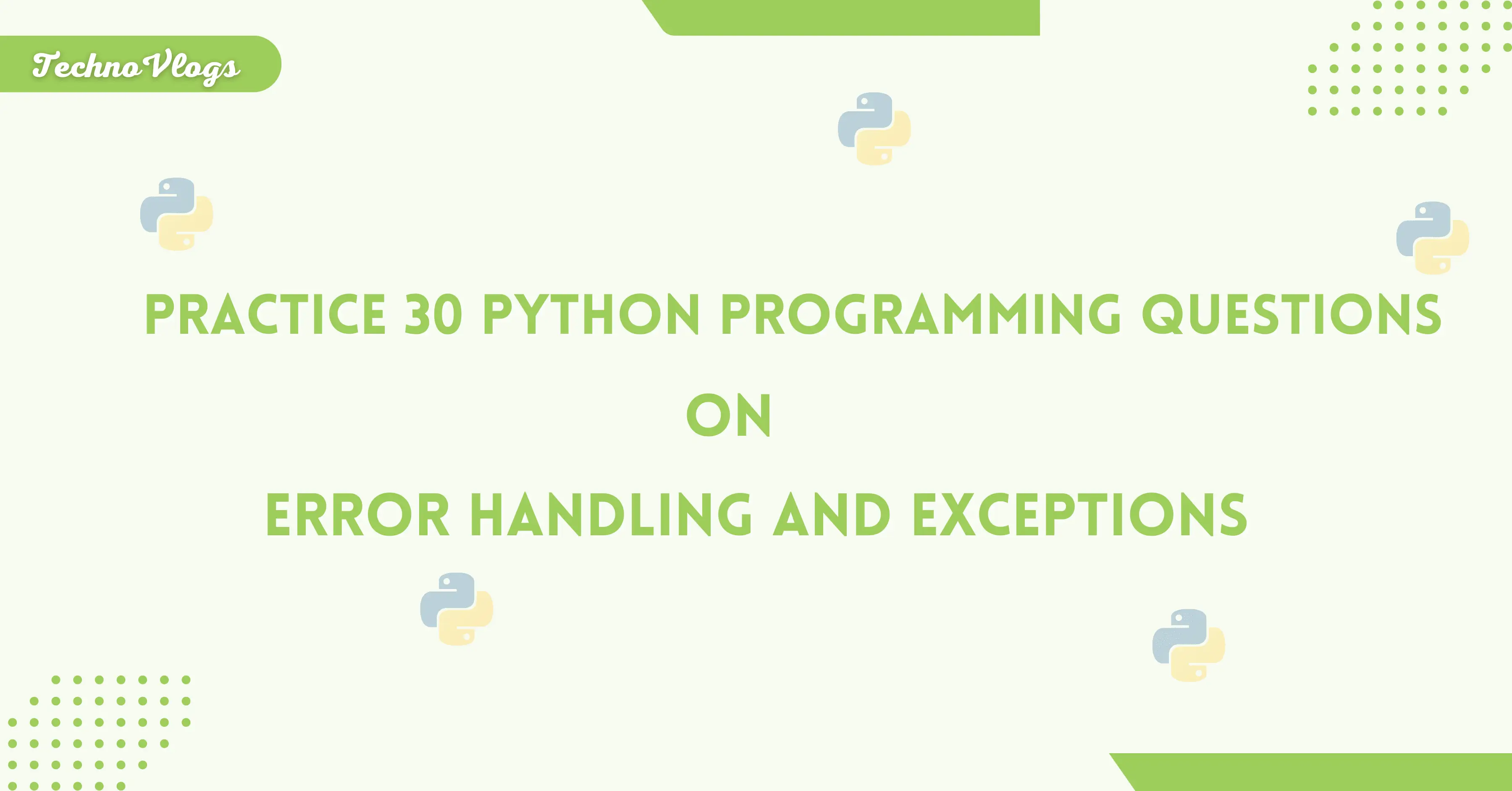
Practice Top 30 Python Programming Questions on Error Handling and Exception
Q1. Write a program to divide two numbers. Use a try-except block to handle division by zero errors and print "Division by zero is not allowed."
Input:
Enter numerator: 10
Enter denominator: 0
Expected Output:
Division by zero is not allowed.
Q2. Write a program to convert a string into an integer. Use a try-except block to handle invalid inputs and print "Invalid input! Please enter a number."
Input:
Enter a number: abc
Expected Output:
Invalid input! Please enter a number.
Q3. Create a program that raises a ValueError if the input number is negative. Print "Negative numbers are not allowed."
Input:
Enter a number: -5
Expected Output:
Negative numbers are not allowed.
Q4. Write a program to read a file. Use the finally clause to ensure the file is closed, even if an error occurs during the reading.
Input:
File name: non_existent_file.txt
Expected Output:
File not found.
Closing the file.
Q5. Write a program to add two numbers. Use a try-except block to handle invalid inputs, and an else clause to print the result if no error occurs.
Input:
Enter first number: 5
Enter second number: 7
Expected Output:
Result: 12
Q6. Write a program to divide two numbers. Use separate except blocks to handle ZeroDivisionError and ValueError.
Input:
Enter numerator: 10
Enter denominator: abc
Expected Output:
Invalid input! Please enter a valid number.
Q7. Create a program that reads a number from the user. Use a nested try-except block to handle cases where the input is invalid or when the result of a computation raises an exception (e.g., dividing by zero).
Input:
Enter numerator: abc
Enter denominator: 5
Expected Output:
Invalid input! Please enter a valid number.
Q8. Create a custom exception class NegativeNumberError. Write a program to raise this exception if the user enters a negative number.
Input:
Enter a number: -3
Expected Output:
Negative numbers are not allowed.
Q9. Write a program to read two integers and divide them. Catch both ValueError and ZeroDivisionError in a single except block.
Input:
Enter numerator: 5
Enter denominator: 0
Expected Output:
An error occurred: division by zero.
Q10. Write a program that raises an exception with a custom message if a number entered is greater than 100.
Input:
Enter a number: 150
Expected Output:
ValueError: Number exceeds 100.
Q11. Write a program to read the contents of a file. Use try-except to handle the FileNotFoundError.
Input:
Enter file name: missing_file.txt
Expected Output:
File not found.
Q12. Write a program that attempts to open and write to a file. Ensure the file is closed properly using the finally block.
Input:
File name: test.txt
Expected Output:
File written successfully.
File closed.
Q13. Write a program that checks whether a number is even or odd. Use else in the try-except block to print "Check completed successfully."
Input:
Enter a number: 4
Expected Output:
The number is even.
Check completed successfully.
Q14. Write a program to raise a custom exception TooSmallError if a number entered by the user is less than 10.
Input:
Enter a number: 5
Expected Output:
TooSmallError: The number is too small.
Q15. Write a program to concatenate two strings. Use a try-except block to handle the case when the inputs are not strings.
Input:
Enter first string: Hello
Enter second string: 123
Expected Output:
TypeError: Both inputs must be strings.
Q16. Write a function divide_numbers that takes two arguments and divides them. Use a try-except block inside the function to handle ZeroDivisionError.
Input:
Enter numerator: 15
Enter denominator: 0
Expected Output:
Error: Division by zero is not allowed.
Q17. Write a program that attempts to call a non-existent method on a string object. Use try-except to catch the AttributeError.
Input:
Enter a string: Hello
Expected Output:
Error: String object has no attribute 'non_existent_method'.
Q18. Write a program to take two integer inputs and print their sum. Handle exceptions if the inputs are not integers.
Input:
Enter first number: 5
Enter second number: abc
Expected Output:
Invalid input! Please enter valid integers.
Q19. Write a program to divide two numbers and use finally to print "Operation complete" whether an exception occurs or not.
Input:
Enter numerator: 12
Enter denominator: 0
Expected Output:
Division by zero is not allowed.
Operation complete.
Q20. Write a program that asks for a number and raises an exception if the number is not between 1 and 10.
Input:
Enter a number: 15
Expected Output:
ValueError: Number is out of range.
Q21. Create a custom exception class InvalidAgeError that accepts an argument for the invalid age. Raise this exception if the entered age is less than 0 or greater than 150.
Input:
Enter age: -5
Expected Output:
InvalidAgeError: Invalid age -5 entered.
Q22. Write a program to check if a number is divisible by 3. Use an else clause to print "No errors occurred," and a finally block to print "Check complete."
Input:
Enter a number: 9
Expected Output:
The number is divisible by 3.
No errors occurred.
Check complete.
Q23. Write a program to access an element in a list by index. Use try-except to handle the IndexError when the index is out of range.
Input:
Enter a list: [1, 2, 3]
Enter an index: 5
Expected Output:
Error: Index out of range.
Q24. Create a custom exception class CustomError that inherits from Exception. Raise this exception if the entered input is not a palindrome.
Input:
Enter a string: hello
Expected Output:
CustomError: The input is not a palindrome.
Q25. Write a program with nested try-except blocks to handle multiple potential errors in a mathematical operation. Ensure the finally block executes at the end.
Input:
Enter numerator: abc
Enter denominator: 0
Expected Output:
Invalid numerator! Please enter a number.
Finally block executed.
Q26. Write a program to skip handling a ValueError using the pass statement and print a generic error message instead.
Input:
Enter a number: abc
Expected Output:
Error: Something went wrong.
Q27. Write a program that logs exceptions to a file when a user enters an invalid file name.
Input:
Enter file name: missing_file.txt
Expected Output:
Error logged: File not found.
Q28. Write a program to access a value in a dictionary. Use try-except to handle the KeyError if the key does not exist.
Input:
Dictionary: {'a': 1, 'b': 2}
Key: c
Expected Output:
Error: Key does not exist.
Q29. Create a function check_positive that raises a ValueError if the input number is not positive.
Input:
Enter a number: -10
Expected Output:
ValueError: The number must be positive.
Q30. Write a program that combines try-except, raising exceptions, custom exception classes, and finally/else blocks to validate user input. If the input is valid, print "Input is valid."
Input:
Enter a number between 1 and 5: 6
Expected Output:
ValueError: Number out of range.
Finally block executed.

Bikki Singh
Hi, I am the instructor of TechnoVlogs. I have a strong love for programming and enjoy teaching through practical examples. I made this site to help people improve their coding skills by solving real-world problems. With years of experience, my goal is to make learning programming easy and fun for everyone. Let's learn and grow together!
